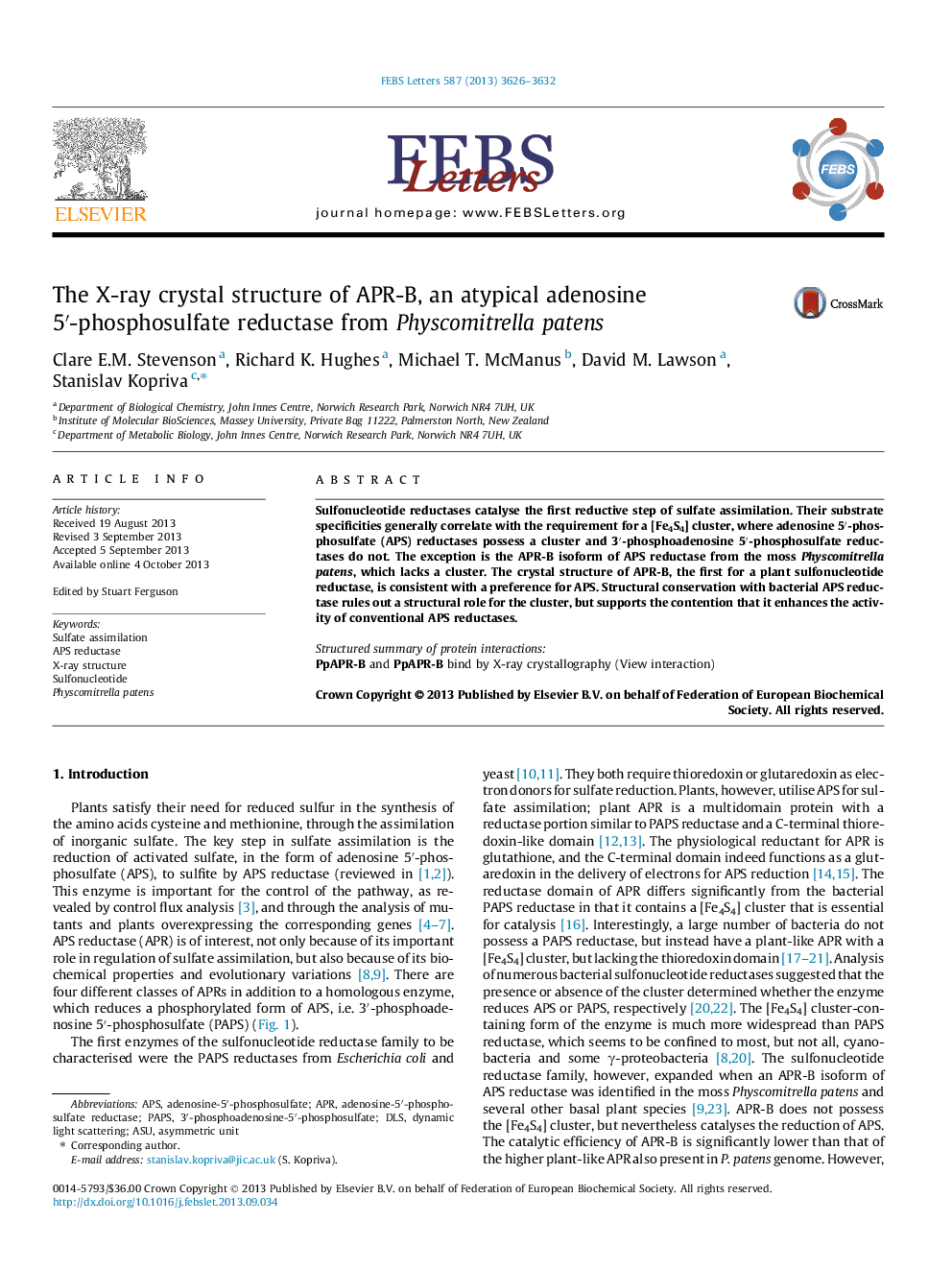| Article ID | Journal | Published Year | Pages | File Type |
|---|---|---|---|---|
| 10870811 | FEBS Letters | 2013 | 7 Pages |
Abstract
Sulfonucleotide reductases catalyse the first reductive step of sulfate assimilation. Their substrate specificities generally correlate with the requirement for a [Fe4S4] cluster, where adenosine 5â²-phosphosulfate (APS) reductases possess a cluster and 3â²-phosphoadenosine 5â²-phosphosulfate reductases do not. The exception is the APR-B isoform of APS reductase from the moss Physcomitrella patens, which lacks a cluster. The crystal structure of APR-B, the first for a plant sulfonucleotide reductase, is consistent with a preference for APS. Structural conservation with bacterial APS reductase rules out a structural role for the cluster, but supports the contention that it enhances the activity of conventional APS reductases.
Keywords
Related Topics
Life Sciences
Agricultural and Biological Sciences
Plant Science
Authors
Clare E.M. Stevenson, Richard K. Hughes, Michael T. McManus, David M. Lawson, Stanislav Kopriva,
